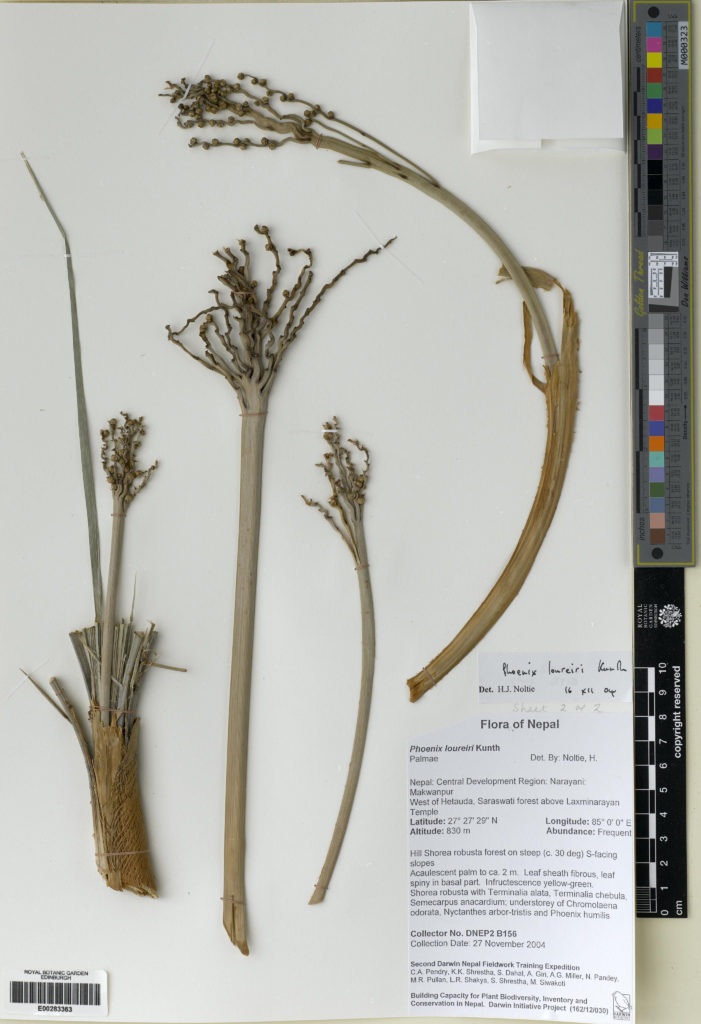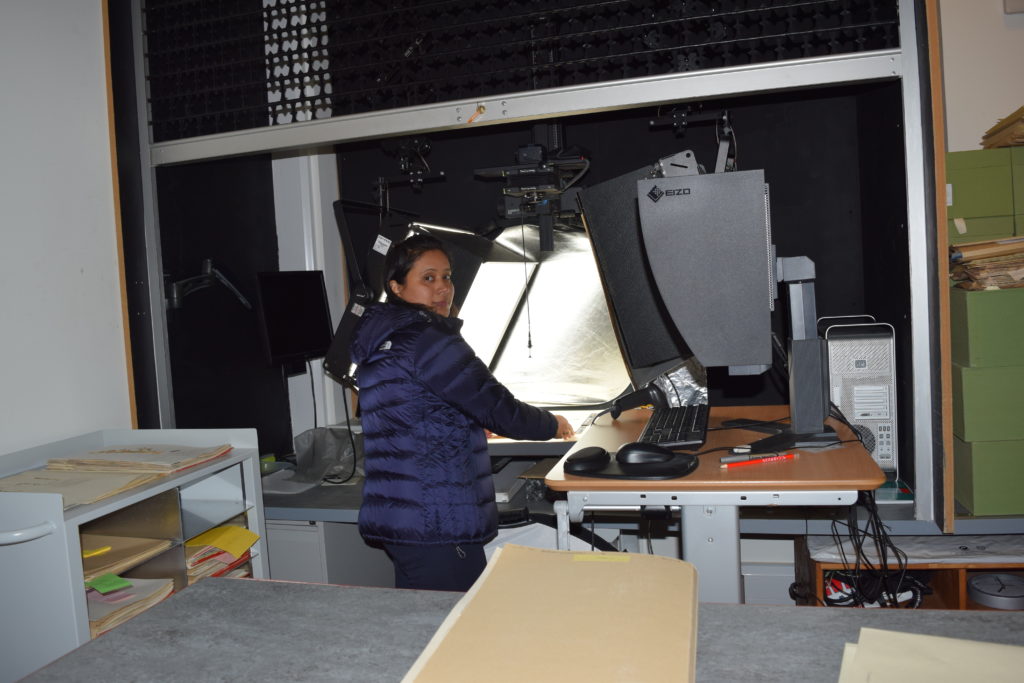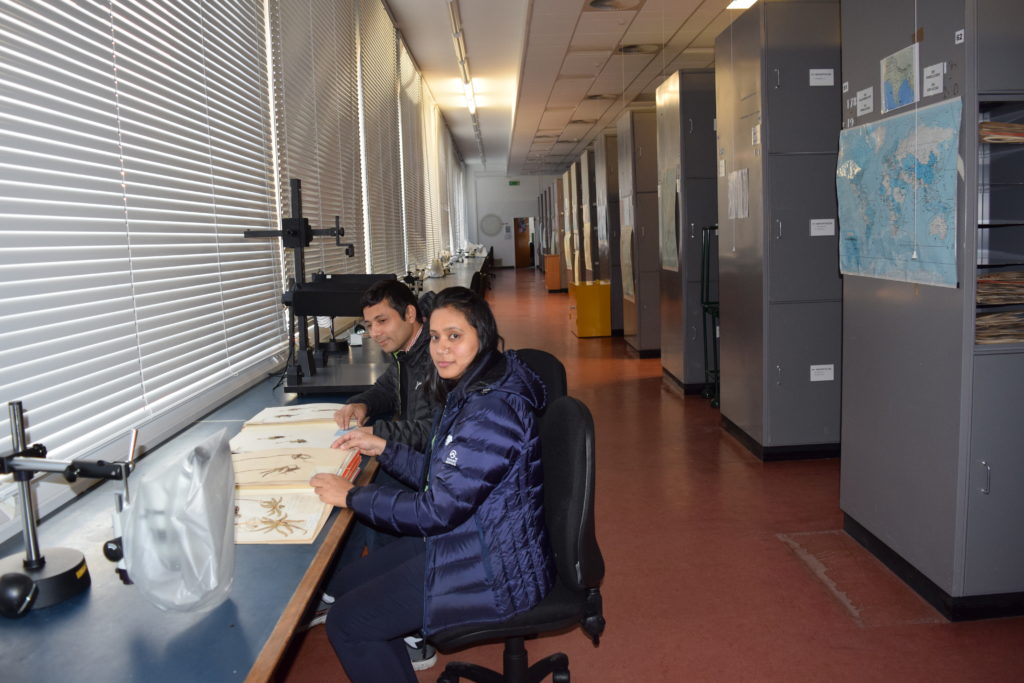Today we have reached a new landmark with half a million herbarium specimens imaged and freely available online on our herbarium catalogue. You can visit and download all our specimen data and images for free here: data.rbge.org.uk/herb
Imaging herbarium specimens started here in earnest in 2004 with the global African Plants Initiative project funded by the Andrew W. Mellon foundation. The project sought to digitise and provide access to African plant type specimens (each species name and description are attached to a type specimen) which then expanded to include Latin America and subsequently the rest of the world. This project work ended at RBGE in 2014 and since then we have continued to explore innovative and novel ways of digitising our 3 million herbarium specimens.

The 500,000th specimen to be imaged was the palm Phoenix loureiri Kunth by two Nepalese researchers, Dhan Raj Kandel and Rita Chhetri. The researchers were visiting RBGE for 6 weeks of flora writing training at the end of 2019, as part of our ongoing collaboration with Department of Plant Resources, Nepal.

Upon returning to Nepal, the researchers are able to work with the RBGE specimen images they produced of the palm (Palmae) and rush family (Juncaceae) to help in the writing of the Flora of Nepal.

It may surprise you to find out that digitisation programmes can differ a lot between herbaria across the world. As a Digitisation Officer I’m always interested to see how other institutes approach the digitisation of their collections!
